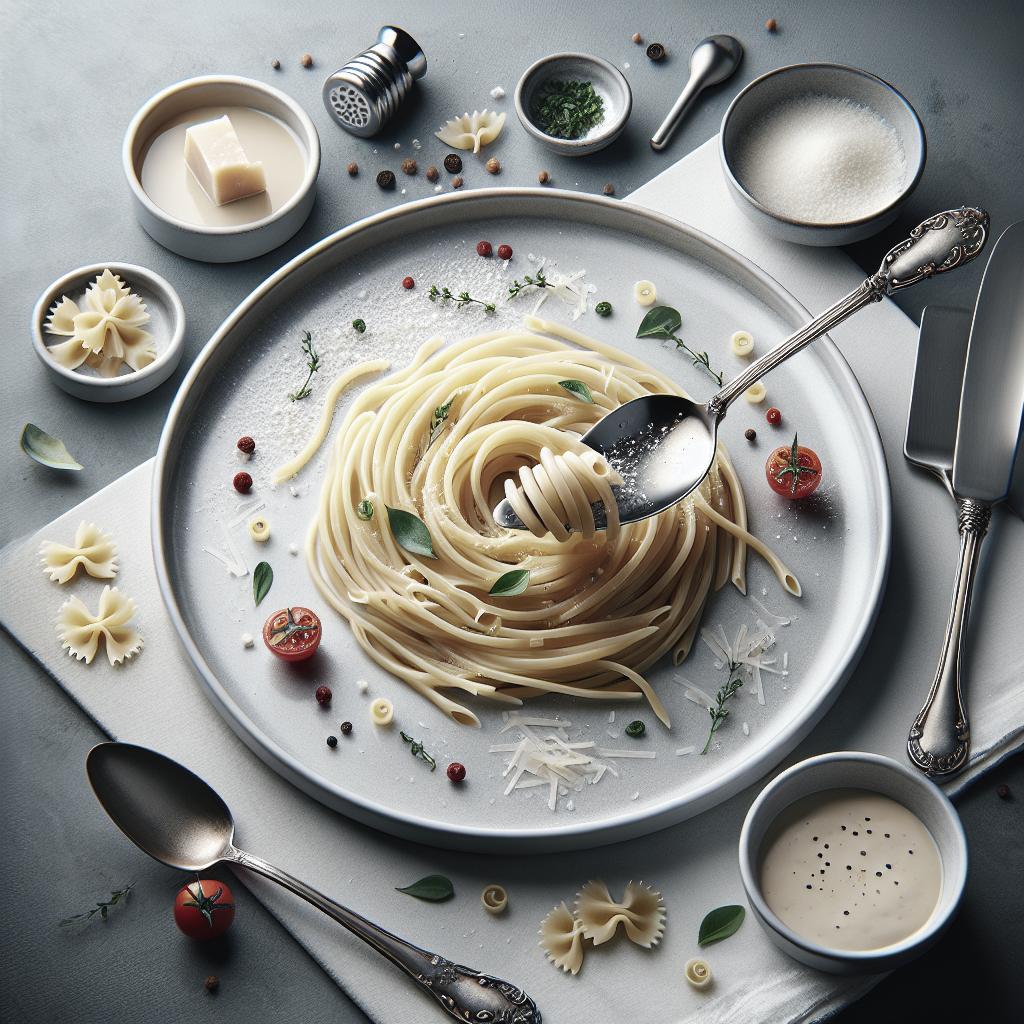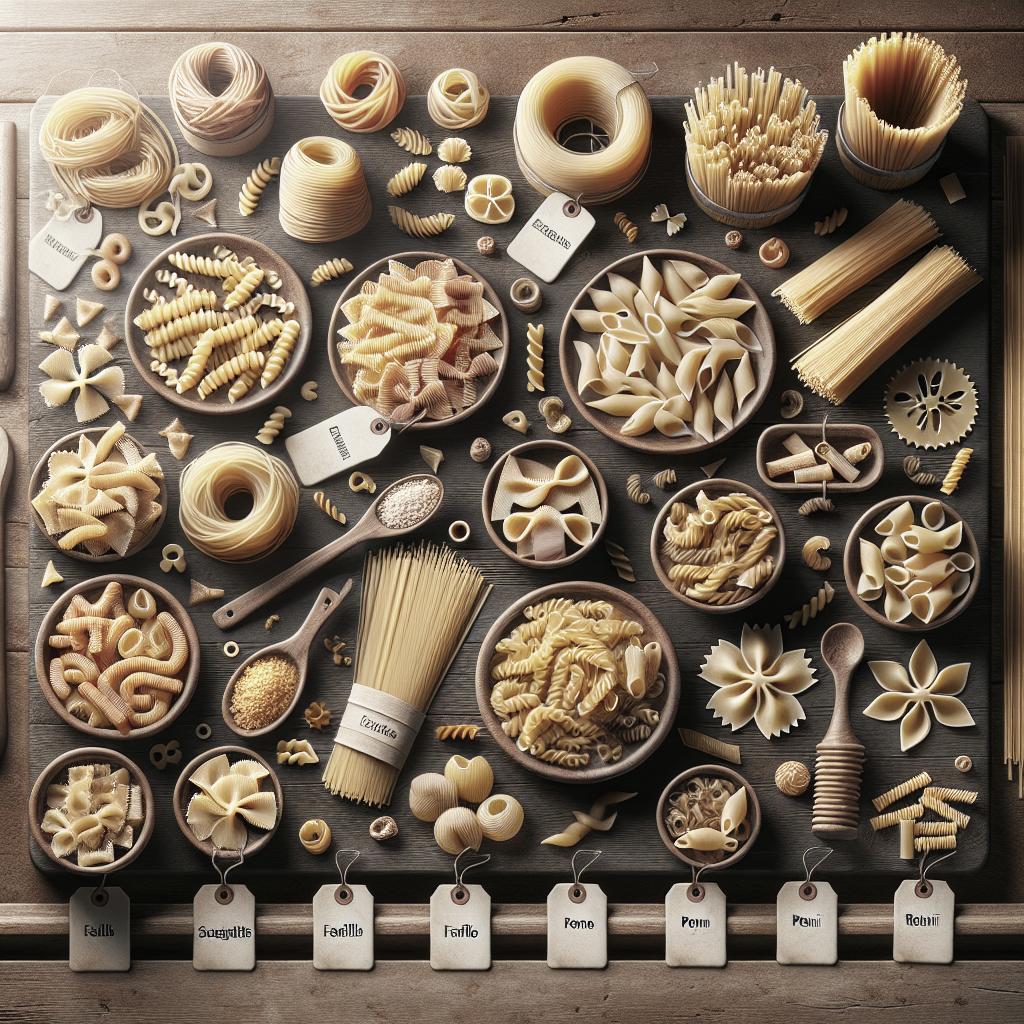“`html
How to Plate Pasta Like a Chef
Plating pasta like a professional chef can transform a simple dish into a gourmet experience. It’s not just about the taste, but also the visual appeal that elevates a meal. In this blog post, we will explore the key tools and techniques you need to master the art of plating pasta. From choosing the right tools to understanding the importance of plate selection, each element will be covered to help you present your pasta dishes like a seasoned chef. By the end, you will have the skills to wow your guests and enhance your culinary presentations.
2 tools you need:
To plate pasta with precision and flair, two essential tools are required: a soup ladle and a large fork or carving fork. These utensils might seem simple, yet they provide the perfect means to handle pasta delicately, ensuring it retains its shape and elegance on the plate. A soup ladle allows for easy portioning, helping you to control the presentation from the pan to the plate.
The large fork or carving fork is critical for twirling the pasta. Twirling creates an appealing nest-like shape that provides height and texture. This technique ensures that the pasta doesn’t just lay flat but stands up on the plate, adding dimensional interest. Using these tools together forms the basis of professional pasta plating, encouraging an enticing eating experience.
1. Soup Ladle 2. Large Fork or Carving Fork (large one used when cutting meat)
The soup ladle serves as a foundational tool, ensuring each serving of pasta is measured and presented uniformly. When cooked pasta is transferred using a ladle, it prevents over-serving and maintains a clean, drip-free process. A well-toned portion makes for a neat presentation which is crucial in haute cuisine.
When it comes to the large fork or carving fork, their benefits go beyond twirling. These forks have long tines which can be used to lift the pasta elegantly, making sure the ingredients are uniformly distributed. The fork can also help incorporate other elements like sauce, garnish, or protein, thus making the entire dish cohesive in design and taste.
For serving: Flat plate, not bowl
The choice between using a flat plate as opposed to a bowl for pasta serving significantly impacts the presentation. Where bowls may hide the depth and details of a dish, flat plates provide an open canvas for elegant arrangements. Flat plates allow for a better display of garnishes and can highlight creative saucing techniques, which bowls often restrict.
Furthermore, a flat plate ensures the uniform cooling of the dish and provides guests with easier access for cutting and twirling, enhancing the overall eating experience. The importance of using a flat plate is reinforced by many professional chefs, who regard it as a staple for creating visually stunning dishes that invite diners to indulge with their eyes before taste.
Share this:
Creating chef-level pasta presentations is a skill worth sharing. Whether with a foodie friend or someone eager to master home cooking, these techniques empower you to share both knowledge and culinary art. Documenting your plating on social media platforms can also inspire others to elevate their home dining experiences, cultivating communities of kitchen creativity.
By sharing your pasta plating creations, you engage in culinary storytelling, encouraging feedback and discourse. Showing the world how a simple dish can embody artistry is not just about displaying skills but spreading joy and appreciation for fine food presentation.
Like this:
If you like the transformation from a daily dish to a gourmet meal, experimenting with pasta plating techniques can serve as a creative outlet. Embracing the artistry of plating encourages an appreciation for aesthetics and cooking precision. It’s a practice that refines not just cooking skills but artistic sensibilities.
Those who enjoy tuning into detail and the visually pleasing aspects of food will find pasta plating a delightful pursuit. It is both a challenge and an opportunity to express individuality and enhance the dining experience. So, if these creative forms appeal to you, don’t hesitate to refine and explore more intricate presentations.
Related
To further hone your pasta plating skills, consider delving into other culinary presentation styles, such as dessert plating and vegetable garnishing. Each offers new techniques and ideas that can be incorporated into pasta dishes, enriching your overall culinary repertoire.
Exploring these related skills broadens your culinary horizons, increasing your versatility in the kitchen. It allows for innovative cross-cultural cooking styles, creating unique, personal expressions on every plate you serve.
Future prospects
Mastering the art of pasta plating opens new avenues in the realm of gastronomy. Whether aspiring towards a professional culinary career or aiming to elevate your home cooking standards, the discipline and creativity gained will serve you beyond pasta dishes. This skill set bolsters your capacity for artistic presentation and attention to detail in diverse culinary contexts.
As trends in sustainable and artistic food presentation grow, your newly acquired pasta plating techniques may also lead you to explore broader culinary challenges. These could range from innovative uses of space and color on plates to eco-friendly presentation practices. The possibilities are endless, and the opportunity to continue evolving is an exciting prospect.
| Topics | Details |
|---|---|
| Essential Tools | Soup Ladle, Large Fork/Carving Fork |
| Plate Selection | Flat Plate Encourages Better Presentation |
| Sharing Techniques | Social Media and Culinary Discussions Improve Skills |
| Related Skills | Dessert Plating, Vegetable Garnishing |
| Future Engagement | Enhancing Cooking Skills and Presentation Creativity |
“`


